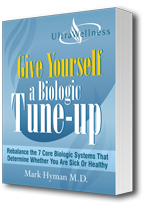Mood disorders are generally grouped into two categories: Major Depressive Disorder (also known as clinical depression) and manic-depressive disorder (also known as bipolar disorder). Major depressive disorder is highlighted in this health challenge, but an overview of other forms of mood disorders are given below. Each type of depression can have its own set of commonly exhibited symptoms and possible causes; but it is important to remember that each person's depression is unique.
Major Depressive Disorder (also known as clinical depression, major depression, unipolar depression or recurrent depressive disorder):This disorder is characterized as a period of unhappiness or low morale which lasts longer than several weeks and may include ideation of self-inflicted injury or suicide. Sub-categories include:
Seasonal Affective Disorder (SAD)
Premenstrual Dysphoric Disorder (PMDD)
Bipolar Disorder (also known as Manic Depressive Disorder):This disorder is marked by both episodes of mania and depression which can happen either independently or in mixed episodes where symptoms of both are present at once. At times, psychotic symptoms can also be present.
Bipolar I Disorder- Marked by at least one manic (marked by abnormally elevated mood, energy or cognition levels) or mixed (manic plus depressive) episode. One or more major depressive episodes may also be present.
Bipolar II Disorder- Marked by at least one hypomanic (highly functioning but not quite manic) and at least one major depressive episode and the depressive episodes are more intense than the manic episodes.
Cyclothymia- Includes mild hypomanic and depressive episodes but is less sever than the bipolar II diagnosis.
Depressive Disorder Not Otherwise Specified: These depressive disorders do not reach the depths or intensity seen in major depressive disorder. Nevertheless, although these depressions are low-grade, they tend to be very long-term, often having their onset in late childhood or early adolescence, and potentially lasting a lifetime.
Minor Depressive Disorder (Dysthymia)- Is when a person exhibits 2 (instead of the 5 needed for a diagnosis of major depressive disorder) of the 9 symptoms outlined in the Depression Causes section of this site, and that these symptoms are present most days for more than a year. The following signs of depression are among those which might be present: low-grade sadness, irritability, negative thinking, low self-esteem, low energy, decreased capacity to experience pleasure, enthusiasm, or motivation. Unfortunately, people with dysthymia can also suffer from periods of major depression.
Recurrent Brief Depression- Indicates shorter but recurring depressive episodes.
Read more about:Click Here to See All 33 Treatments for Depression
FoundHealth has 33 treatments for Depression!
See all Depression Treatment
options and start building your care plan today.

